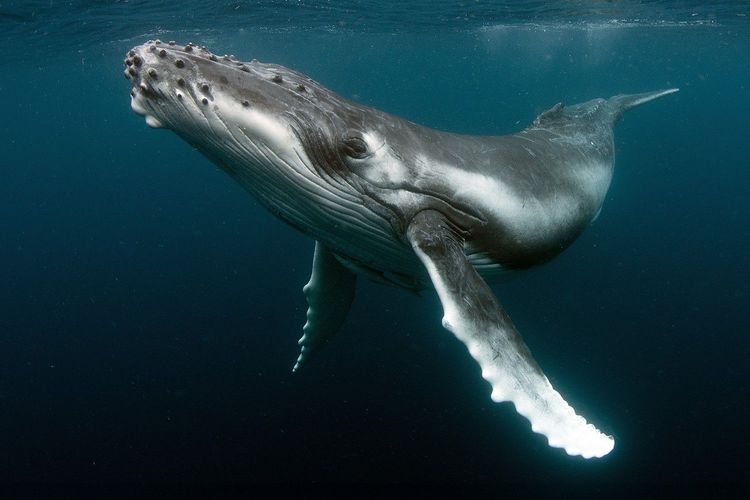
Whales are not only magnificent creatures to admire, but they also have crucial ecological functions. They spend their lives on the surface to breathe and dive deep into the abysses to feed, traveling for kilometers across the ocean. Considering that whales undertake some of the longest migrations on the Planet, they can thus influence nutrient dynamics and the carbon cycle on an oceanic scale.
Harnessing nature's climate change solution
Whales are pivotal in the fight against climate change, as they can capture large amounts of CO2 therefore constituting an important resource for the protection and conservation of Natural Capital. Whales, in fact, store carbon in their bodies during their lifetime; once dead, their carcasses sink to the bottom of the ocean, carrying all the carbon absorbed during their life, which is then stored in marine sediments. Great whales can accumulate up to 33 tons of CO2, removing carbon from the atmosphere for centuries.
But how does it work in detail?
Whale Pump
Thanks to a phenomenon called whale pump, their interaction with phytoplankton contributes to the movement of the carbon to deeper layers of the ocean. Moreover, whales have a "multiplier effect" on phytoplankton populations: whales dive underwater to feed, but return to the surface to breathe or release fecal plumes which, being full of nutrients, are essential for the growth of phytoplankton, which in turn play a fundamental role in turning CO2, into oxygen through photosynthesis. Researchers have reported that phytoplankton captures about 40% of the CO2 produced every year, which is equivalent to the amount captured by 1.70 trillion trees and four Amazon forests.
Conveyor belt
Many species move from nutrient-rich feeding areas to nutrient-poor breeding areas. In the latter, nutrient-rich urea is released into the sea, which stimulates phytoplankton growth.
Living biomass
All organisms are composed of carbon. The larger the animal and the longer its average life, the greater will also be the amount of carbon in its tissues.
Dead whale fall
When the animal dies, its carcass sinks to the seabed. Here the carbon within the organic tissue supports the life of organisms at depth and is then incorporated into the sediment.
The importance of protecting whales
Anthropogenic threats, such as fishing activities (hunting and "ghost nets"), plastic pollution, and noise pollution, still endanger whale populations. Scientific data shows that we have lost about 90% of the stock of large whales.
Protection of whale populations is crucial for maintaining the health of marine and coastal ecosystems and constitutes a solution that vividly demonstrates the potential of natural resources. This adds to the importance of increasing the protection of marine ecosystems in general. Environments such as mangrove forests and seagrass meadows are particularly effective in removing carbon dioxide from the atmosphere.


